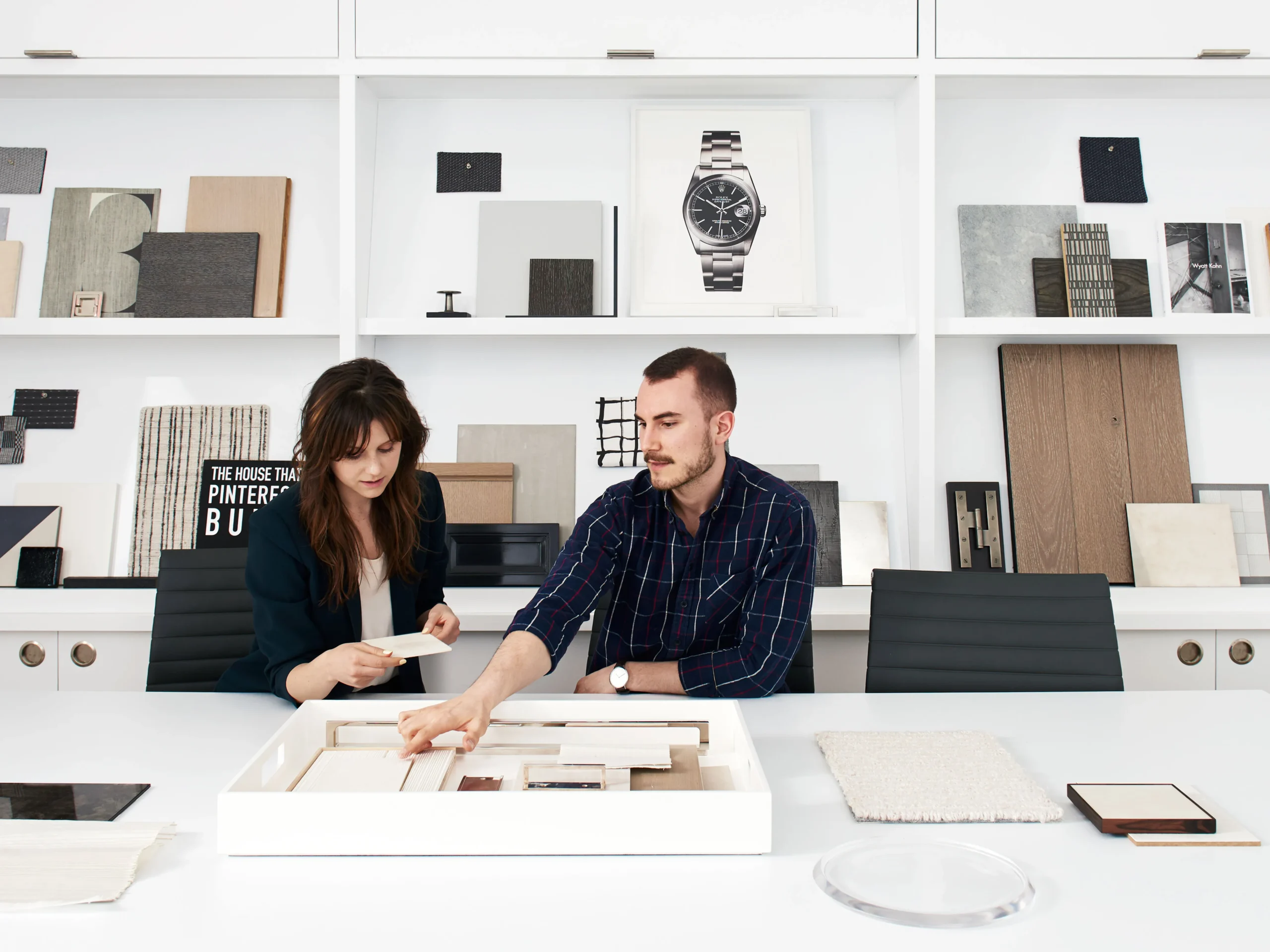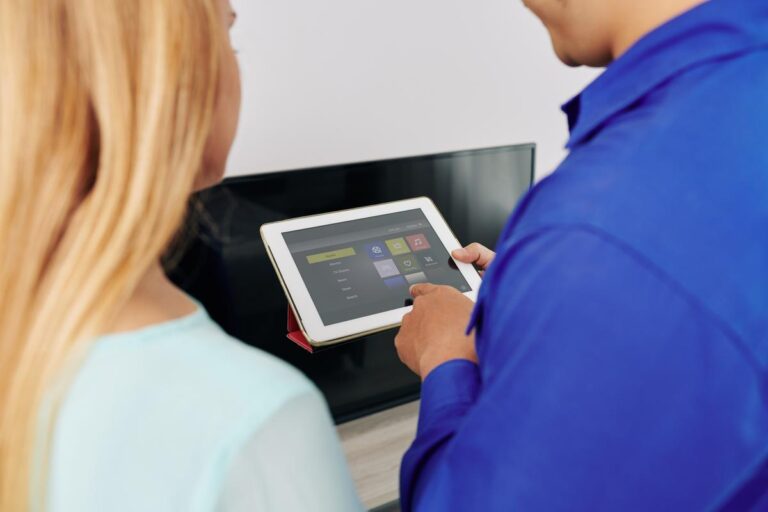7 Best Software Tools For Interior Designers
Interior design has evolved significantly with technological advancements. Designers now have access to numerous software tools that enhance their ability to create detailed and accurate representations of their ideas. These tools cater to various needs, from simple room layouts to complex building designs.
Choosing the right software can streamline the design process, making it more efficient and effective. With so many options available, it’s essential to identify the best tools that suit different project requirements and personal workflows. This article will explore some of the top software tools that interior designers can use to bring their visions to life.
1) SketchUp
SketchUp is a widely used 3D modeling software tool in the interior design industry. It is known for its intuitive interface and advanced features. It caters to both beginners and professionals.
One key advantage of SketchUp is its extensive 3D model library. This allows users to select from a wide range of pre-built models. It also supports custom model creation.
SketchUp’s precise drawing tools enable detailed and accurate designs. This makes it suitable for creating both small-scale and large-scale projects. Users can easily draft floor plans, elevations, and sections.
The software also offers tools for texture and material customization. Designers can apply different finishes and materials to their models. This enhances the realism of the designs.
For those working in augmented reality, SketchUp provides features to visualize designs in real-world settings. This helps users see their vision before actual implementation. It improves client presentations and decision-making.
SketchUp Pro is often the go-to choice for architects and construction professionals. Its robust set of features streamlines the design process. It supports a variety of file formats for easy sharing and collaboration.
Learn more about the professional features of SketchUp.
Whether you are designing for residential spaces or commercial projects, SketchUp delivers a comprehensive set of tools. It remains a popular choice for many in the interior design field.
2) AutoCAD
AutoCAD is one of the most popular software programs for interior designers today. Used by architects, engineers, and construction professionals, it offers a range of tools for detailed and precise design work.
The software allows for both 2D and 3D modeling. This makes it possible to create floor plans, layouts, and detailed designs of every part of a room.
Its interface includes a range of customization options. This flexibility lets designers tailor the software to fit their specific needs and preferences.
AutoCAD also supports a wide variety of file formats. This ensures compatibility with other design tools and software, such as Photoshop and SketchUp.
One of the strengths of AutoCAD is its ability to handle large and complex projects. This makes it a go-to choice for professional and commercial interior design.
The Planner 5D blog notes its popularity among interior designers. It highlights how AutoCAD can suit various project requirements and personal workflows.
3) Revit
Revit is a powerful Building Information Modeling (BIM) software that interior designers use to streamline and enhance their design process. This software automates many design tasks, making it easier to create detailed and accurate interior layouts.
One notable feature is its ability to automatically fit elements like doors and windows into walls. This functionality eliminates the need for manual adjustments, saving time and reducing errors.
Revit also offers robust 3D visualization tools. Designers can create realistic renderings of spaces, helping clients visualize the final look. This makes it easier to make informed design decisions and adjustments early in the project.
The software’s intelligent 3D modeling capabilities are especially useful. These capabilities allow designers to experiment with different layouts and elements to see how they impact the overall space. This is invaluable for planning and optimizing interior designs.
Revit’s integration with other Autodesk applications enhances its utility. For instance, it can seamlessly connect with AutoCAD, allowing for the easy transfer and manipulation of designs. This versatility makes it a go-to choice for many professional interior designers.
The software also supports collaboration among team members. Designers, architects, and engineers can work on the same project simultaneously, ensuring coordinated effort and reducing the risk of miscommunication.
For those considering learning or using Revit, it is positively reviewed by many in the industry. The software’s user-friendly interface and comprehensive features make it a top choice for interior design projects. To read more about using Revit for interior design, check out Revit for Interior Design.
4) 3ds Max
3ds Max is a powerful software tool for interior designers. It excels in 3D modeling, animation, and rendering. Developed by Autodesk, this software is widely used in various industries, including architecture and interior design.
One of the key features of 3ds Max is its extensive library of textures and materials. This allows designers to create highly realistic visualizations of their projects. The software also supports various lighting and shading options, which can enhance the visual appeal of designs.
Another important feature is the software’s capability for detailed modeling. This is particularly useful for intricate designs and large-scale projects. Users can create complex geometries and intricate details, making it ideal for high-end interior design work.
3ds Max also integrates well with other Autodesk products like AutoCAD and Revit. This makes it easier for designers to import and export files between different platforms. The seamless workflow can save time and reduce errors.
The software does have a steeper learning curve compared to some other design tools. However, its extensive features and capabilities make it worth the effort. Training resources and online tutorials are available to help users get up to speed.
In terms of performance, 3ds Max is known for its stability and reliability. It can handle large files and complex scenes without crashing. This is important for professionals who need to work on detailed and demanding projects.
3ds Max is not free, and its pricing reflects its capabilities. It is considered a high-end tool, suitable for professionals who require advanced design and rendering features. Users can choose between different subscription plans based on their needs.
5) Chief Architect
Chief Architect is a top-notch software tool for interior designers. It’s known for its intuitive interface and powerful features. With this software, users can create detailed 3D models and floor plans.
Chief Architect offers a variety of tools, including automated roof and foundation builders. This helps in speeding up the design process. The software also includes detailed wall elevations and building systems generation.
A standout feature of Chief Architect is its large library. It contains a wide range of materials, colors, and textures. Designers can choose from thousands of furnishings from name-brand manufacturers.
This software is suitable for both professionals and DIY enthusiasts. It uses Building Information Modeling (BIM) tools to ensure accurate and detailed designs. These features make it a go-to for anyone looking to create high-quality interior design plans.
Chief Architect also supports importing and exporting various file types. This ensures compatibility with other design tools. The ability to generate 3D renderings makes it easier for designers to present their ideas to clients.
For more information, you can visit the Chief Architect website to explore its capabilities.
6) RoomSketcher
RoomSketcher is a user-friendly interior design software. It allows designers to create and customize floor plans and 3D visuals easily. This tool is beneficial for both professionals and beginners.
One of the key features is the ability to draw floor plans from scratch. Users can also upload blueprints or sketches to start their projects. This flexibility makes it easy to begin with any design concept.
RoomSketcher stands out with its instant 3D visualizations. Changes to a floor plan instantly update the 3D view, saving time and effort. This feature enhances client presentations by allowing real-time modifications during discussions.
Another advantage is its affordability. RoomSketcher offers a cost-effective solution compared to other professional interior design software. It provides essential tools without the high price tag, making it accessible for various users.
The software streamlines collaboration by simplifying the back-and-forth with clients. Instead of redrawing plans or changing visuals manually, updates can be done within the software. This efficiency speeds up project timelines and reduces misunderstandings.
RoomSketcher also supports drag-and-drop functionality, making it intuitive to use. Designers can easily move furniture and other elements around the floor plan. This ease of use is helpful for quick adjustments and experimenting with different layouts.
With a wide range of features, RoomSketcher caters to many design needs. It is suitable for creating detailed floor plans as well as immersive 3D visuals. Users can expect a comprehensive tool that balances simplicity with advanced capabilities.
For more information, visit RoomSketcher.
7) Homestyler
Homestyler is a free online tool for home and interior design. This platform is popular for its ease of use and variety of features that make it accessible to both beginners and experienced designers.
Users can create detailed 3D renders of their design projects. The tool provides a vast library of furniture, fixtures, and decor items. These can be easily dragged and dropped into the design space.
Homestyler also offers a floor planner, making it straightforward to layout spaces accurately. This feature helps visualize room layout and furniture placement in a realistic manner.
For those looking to learn, Homestyler includes numerous DIY home design video tutorials. These tutorials cover various aspects of design, helping users improve their skills.
The platform supports real-time collaboration, enabling users to share designs and receive feedback instantly. This is useful for designers working with clients or teams.
Homestyler’s community aspect allows users to connect with over 10 million designers worldwide. This encourages sharing ideas and gaining inspiration from others’ designs.
The tool is entirely web-based, meaning there’s no need to download software. This convenience allows users to access their projects from any device with internet access.
For a comprehensive look at Homestyler, one can visit their official site.
Key Features Of Interior Design Software
Choosing the right interior design software involves looking at several important features. Ease of use, 3D visualization, and customization options play key roles in making a software tool effective.
Ease Of Use
The best interior design software should be simple to navigate. Intuitive interfaces help users quickly understand how to utilize tools. Drag-and-drop functionality makes placing furniture and fixtures easy.
Clear tutorials and user guides can assist both beginners and experts. Software like Planner 5D offers a user-friendly interface with easy-to-follow instructions.
An uncomplicated layout reduces the learning curve, allowing designers to focus more on their creative processes. Smooth performance is essential, so it must run efficiently on both powerful and average computers.
3D Visualization
3D visualization lets designers see how their plans will look in real life. Software such as Live Home 3D offers this feature, enabling the creation of detailed 2D floor plans and turning them into 3D models.
This helps in visualizing colors, textures, and lighting accurately. Additionally, 3D walkthroughs provide a realistic experience. It is like virtually walking through the designed space.
The ability to switch between day and night views and adjust light settings gives a more accurate feel of the space. This feature also helps in identifying potential design issues early.
Customization Options
Customization is crucial for tailoring designs to specific needs. A software tool should allow designers to modify every detail, from wall colors to furniture styles. Programs like AutoCAD LT offer extensive customization options.
Users should have access to a vast library of furniture and decor items. Importing custom objects and textures enhances design variety.
Being able to save and reuse design templates is beneficial. Customizable grids and measurements ensure accuracy. This helps in creating designs that meet clients’ specifications perfectly.
How To Choose The Right Tool
Picking the best interior design software involves understanding your unique needs, considering your budget, and ensuring compatibility with your existing devices and software.
Assessing Your Needs
Before selecting any software, it is important to determine what you will use it for. If you need advanced 3D renderings, consider tools like 3DS Max which offers in-depth visualization and walkthroughs. For beginners or simple tasks, Planner 5D is user-friendly and does not require special skills.
Think about whether you need room planning, full house design, or just simple layout adjustments. Also, consider features like virtual reality walkthroughs or mobile app support. These specifics will guide you towards the tool that fits your project.
Budget Considerations
Interior design software ranges from free options to expensive, high-end tools. Free programs like DreamPlan offer basic features and are great for those on a tight budget. Mid-range software like Live Home 3D offers more advanced features without breaking the bank.
High-end options, such as 3DS Max, come with a higher price tag but provide robust tools for professional designers. Weighing the features against the cost is essential to get the best value for your money.
Software Compatibility
Another key factor is ensuring that your chosen software is compatible with your computer and other devices. Most modern tools are available for both Windows and Mac. Double-check the system requirements of each software to avoid issues with installation and performance.
Moreover, some software offers integration with other design tools or platforms, which can be a significant advantage. For example, choosing software that allows easy import and export of files can streamline your workflow. Always ensure the software supports your existing work environment for seamless use.
Benefits Of Using Software In Interior Design
Using software in interior design provides numerous advantages. It allows for enhanced visualization of projects, improved accuracy and precision in designs, and increased efficiency in completing tasks.
Enhanced Visualization
Interior design software enables designers to create detailed 2D and 3D visualizations. These visual tools allow both clients and designers to see exactly how a room will look before any physical work begins. This ability to visualize spaces in advance reduces misunderstandings and ensures that the final outcome matches the client’s expectations.
Designers can experiment with different styles, colors, and layouts easily. The software also allows for virtual walk-throughs of the space, giving a realistic feel of the design. By using such tools, changes and adjustments can be made quickly, saving both time and money.
Improved Accuracy And Precision
Accurate measurements and precise details are crucial in interior design. Software tools help in maintaining these standards by offering features like exact dimension input, error-checking algorithms, and scalable representation. This ensures that all elements fit perfectly within the given space.
Interior design software minimizes human error and miscalculations. It also offers the ability to test different configurations and materials virtually. This level of precision is hard to achieve manually and leads to higher quality and consistency in design projects.
Increased Efficiency
Interior design software significantly boosts efficiency. It automates many repetitive tasks and streamlines the design process. For example, designers can quickly generate floor plans, elevations, and sections without manually drawing each one.
Collaboration becomes easier as well. Software platforms often include features that allow multiple users to work on the same project simultaneously. This reduces the time needed for revisions and approvals, leading to faster project completion.
By leveraging software tools, designers can focus more on creativity and less on technical details, ultimately enhancing productivity and improving client satisfaction.
Frequently Asked Questions
This section addresses common questions about interior design software, offering insights into beginner-friendly options, free tools, essential features, and more.
What are some user-friendly interior design software options for beginners?
Beginners might find SketchUp and Planner 5D easy to use. Both provide intuitive interfaces and a range of tutorials. These programs help new users design simple layouts and visualize spaces without extensive technical skills.
Which interior design software tools are available for free?
There are several free interior design software options. Live Home 3D offers a free version for creating 2D and 3D plans. Another option is Planner 5D, which provides free access with limited features, suitable for basic design tasks.
What are the top 3D home design software tools used by professionals?
Professionals often use robust 3D home design tools like AutoCAD, Revit, and 3ds Max. These programs offer advanced features for detailed modeling, rendering, and visualization, making them ideal for complex interior design projects.
How do interior designers use software to improve their design process?
Interior designers use software to create precise designs, save time, and collaborate with clients. Tools like AutoCAD and Revit help in drafting accurate blueprints and visualizing the final outcome. This collaboration ensures the design meets the client’s expectations and reduces errors.
Can you recommend any AI-powered interior design tools?
AI-powered tools like ARitize Decorator allow designers to create virtual showrooms and visualize products in 3D. These tools enhance the client’s experience by enabling them to see how different designs and furnishings will look in their spaces before making a purchase.
What software features are essential for effective interior design?
Essential features include 3D visualization, rendering capabilities, and an extensive library of materials and furnishings. Programs like Chief Architect offer these features, helping designers to create detailed and realistic interior models. Other important features are collaboration tools and precise measurement functions to ensure accuracy in designs.






